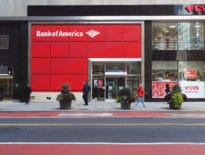
Rick Dimino
Boston Mayor Kim Janey takes office during one of the most challenging times in modern history. It is a critical stretch of the pandemic and vaccine distribution, there is pressure to reopen businesses and schools and there are significant concerns about the future of the city’s economy.
At the same time, this extraordinary moment can be the start of a sustained, more equitable and prosperous future for Boston and the entire region. Mayor Janey is well positioned, and in the areas of transportation policy there are opportunities to make transformational impacts this year.
Certainly, when compared to the public health and issues directly related to the pandemic, transportation policy is not a critical issue on day one. However, a mobility crisis could be looming. Boston and the region will need the MBTA to be an appealing option to commuters as workplaces reopen this summer and fall.
If public transit isn’t perceived as safe and reliable, then roadway traffic and congestion could overwhelm the region discourage some workers from returning to the workplace. Our economy could suffer if companies relocate outside of the urban core business districts or choose other states in the county because of concerns regarding Boston’s access and mobility problems.
Street Management Needed
Mayor Janey is already taking an active role in pushing the MBTA to restore all transit service cuts, and the city is provided free transit passes in specific neighborhoods to encourage transit use. This is a very encouraging sign. Together with South Boston Congressman Steve Lynch and the entire state congressional delegation, pressure from elected officials will help hold the T accountable in meeting the needs of riders and supporting economic recovery.
Before the pandemic, A Better City released a report that showed each year the MBTA returns $11.4 billion in regional economic benefits, from an annual budget of approximately $2 billion. This return of more than five times what we as a region spend to operate the MBTA system and is another reason to reinstate full transit service as soon as possible.
The city also controls most of the streets within Boston and mayors hold great sway over how they are used. The city delivered great progress in the past few years with bus rapid transit (BRT) lanes, dedicated bike lanes and expanded curbside dining. But the competition for limited roadway space could be unprecedented this year, due to the dramatic increase of delivery vehicles, Ubers and more drivers returning to the streets.
Focused management, attention and financial resources will be required to create a safe, welcoming outdoor environment that jumpstarts the economy, keeps traffic moving, enhances transit and revitalizes neighborhood activity in 2021.
A New Future for Allston
Mayor Janey will also be able to shape the future for Allston and the Interstate 90 multimodal project through her advocacy for an all-at-grade design approach to the highway system’s reconstruction.
Over the past five years, a diverse array of stakeholders united to support of taking down the structurally deficient viaduct and activating this underutilized section of the city. Unfortunately, MassDOT has signaled they may rebuild the I-90 Viaduct and keep this elevated highway in place. The design plan for this project will shape Boston for the next century.
Few mayors are ever presented with an opportunity of this scale. It is a choice between rebuilding 1950s-era roadway infrastructure that divides Allston, or an alternative vision that puts the roadway at-grade level and that prioritizes the people of the neighborhood.
Mayor Janey can take a strong stance to demand MassDOT select a design that advances the interest of the community’s leaders seeking accessibility, equity, and sustainability. MassDOT may be making decisions based primarily on short-term costs, but Mayor Janey can put a premium on the long-term interests of people and this community.
Finally, this is a time to accelerate the infrastructure planning work of the last two mayors.
Mayor Tom Menino created the Green Ribbon Commission in 2010 into develop the city’s response to climate change. Mayor Marty Walsh continued this effort and embraced its work. Mayor Walsh also set in motion master planning efforts such as Imagine Boston 2030, Go Boston 2030 and Climate Ready Boston. It would be a shame if many of these ideas and recommendations were reversed or delayed simply because they began under an old administration.
These reports on capital infrastructure needs should be the blueprints for discussion with our powerful Congressional delegation as they plan the upcoming federal infrastructure bill. Mayor Janey could organize a task force with the state and MBTA to prioritize all the transportation and climate resiliency infrastructure projects that impact Boston, to be sure we are ready, coordinated, and speaking with one voice. If we can’t maximize federal funding this year, we will miss a once–in–a–generation chance to see major investment in this region.
In crisis, there is always opportunity. Boston’s new mayor can produce an effective reemergence from the pandemic in the months ahead and help set a course for long-term prosperity that addresses the transportation, climate, and resiliency needs of the city. It needs to be a top priority This is a time for action and leadership at City Hall under our new mayor as we continue to create a stronger Boston and commonwealth.
Rick Dimino is CEO of A Better City





